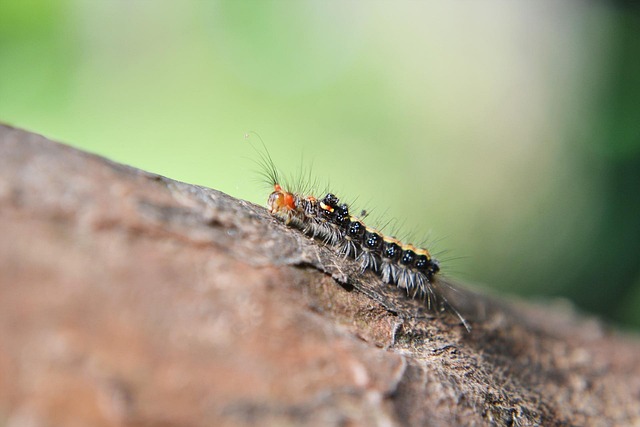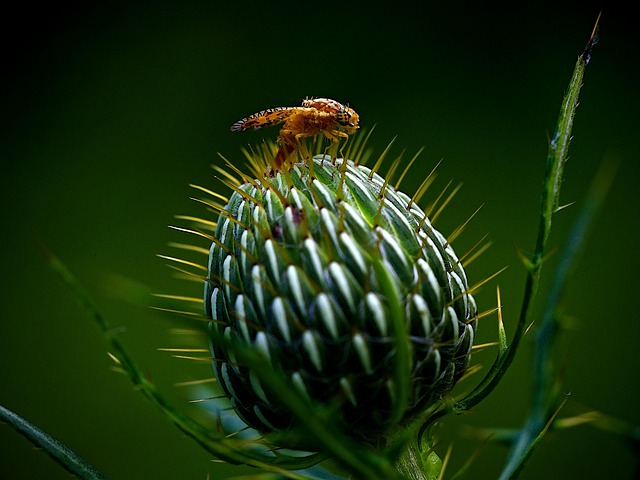The text highlights the drawbacks of traditional chemical pest control methods, which contaminate soil, water, and air and harm beneficial insects, birds, and wildlife. It promotes Eco-Friendly Pest Control as a sustainable alternative that uses natural elements like plants, essential oils, and organic compounds to manage pests without harming the environment or human health. This shift is driven by growing consumer demand for eco-conscious solutions, with both residential and commercial spaces adopting these methods. The future of pest control looks bright with innovative biological solutions and increased community engagement, aiming to reduce ecological impact and preserve biodiversity.
In today’s world, the pursuit of eco-friendly pest control is more vital than ever. Traditional chemical-based methods, while effective, come with significant environmental costs. This article delves into the rising trend of chemical-free pest solutions, exploring their benefits for our ecosystems and communities. We’ll navigate understanding traditional practices, highlighting their impacts, and discussing natural repellents proven to be both effective and sustainable. From residential settings to commercial spaces, we’ll uncover strategies fostering a greener approach to pest management.
Understanding Traditional Pest Control and its Environmental Impact

Pest control has historically relied on chemical solutions, which while effective, can have significant environmental consequences. Traditional methods often involve toxic pesticides that can contaminate soil, water bodies, and even contribute to air pollution. These chemicals can be harmful not only to pests but also to beneficial insects, birds, and other wildlife, disrupting entire ecosystems.
The quest for eco-friendly alternatives has led to the development of chemical-free pest solutions, focusing on safer, more sustainable methods. By understanding the drawbacks of traditional practices, consumers and professionals alike can embrace greener options that protect our health and the environment without compromising on pest management efficiency.
The Rise of Eco-Friendly Pest Management Practices

In recent years, there’s been a noticeable shift towards eco-friendly pest management practices among both consumers and professionals in the pest control industry. This trend is driven by a growing awareness of the environmental and health impacts of traditional chemical pesticides. As folks become more conscious of the harmful effects these substances can have on ecosystems and human well-being, they’re seeking alternative solutions that align with their eco-conscious values.
Eco-friendly pest control offers a range of innovative approaches designed to minimize the use of synthetic chemicals. These methods include biological controls such as introducing natural predators or parasites, using plant-based repellents and essential oils, implementing structural changes to prevent pest entry, and adopting integrated pest management (IPM) strategies that focus on long-term prevention and sustainable practices. This not only reduces exposure to toxic substances but also promotes a healthier environment for both humans and wildlife.
Benefits of Chemical-Free Pest Solutions for the Environment

Chemical-free pest solutions offer a range of environmental benefits, making them an attractive and sustainable alternative to traditional methods. By avoiding synthetic chemicals, these solutions minimize pollution and protect water sources from harmful residues. This is particularly crucial in ecologically sensitive areas, where even trace amounts of pesticides can disrupt local ecosystems.
Additionally, eco-friendly pest control promotes biodiversity by mitigating the risk of harm to beneficial insects, birds, and other wildlife. Unlike chemical pesticides, which often have broad-spectrum effects, natural solutions target specific pests while preserving the balance of the ecosystem. This approach not only ensures a healthier environment but also contributes to the overall resilience of landscapes and communities.
Effective Natural Pest Repellents and Their Applications

In the quest for sustainable living, eco-friendly pest control has emerged as a prominent alternative to traditional chemical-based methods. Natural pest repellent solutions offer an effective and safe approach to managing pests without compromising environmental health. These repellents harness the power of plants, essential oils, and other organic compounds known for their insect-deterring properties. For instance, citrus scents like lemon and orange oil have been proven to repel various insects, making them a popular choice for indoor spaces.
The applications of these natural solutions are diverse. In gardening, neem oil, derived from the neem tree, acts as a powerful insecticide and fungicide, providing a protective barrier for plants. For household pests like ants and mosquitoes, certain herbs such as lavender and peppermint can be used to create homemade repellents or essential oil diffusers. These eco-friendly methods not only reduce exposure to harmful chemicals but also promote a healthier, more sustainable environment for both humans and wildlife.
Implementing Eco-Conscious Pest Control in Residential Settings

Implementing eco-conscious pest control in residential settings has gained significant popularity as folks become more aware of the potential harm caused by chemical pesticides. Traditional methods often leave residues that can be harmful to both humans and pets, as well as contribute to environmental pollution. Eco-friendly pest control alternatives offer a safer and more sustainable approach. These solutions utilize natural repellents, beneficial insects, plant-based oils, and other non-toxic methods to manage pests effectively while minimizing ecological impact.
By adopting eco-friendly pest control practices, homeowners can create healthier living environments for their families and contribute to the preservation of local ecosystems. Simple changes, such as using essential oils like peppermint or lavender, which have natural insect-repelling properties, or introducing beneficial insects like ladybugs to control specific pests, can make a difference. Additionally, maintaining proper sanitation, sealing entry points, and employing physical barriers are non-chemical strategies that help prevent pest infestations from occurring in the first place.
Commercial Spaces: Adopting Sustainable Pest Management Strategies

In today’s world, where environmental consciousness is at an all-time high, commercial spaces are increasingly adopting sustainable practices, including eco-friendly pest control methods. Traditional chemical-based solutions have long been the go-to for pest management, but their detrimental effects on both health and the ecosystem have prompted a shift towards more holistic approaches. Commercial facilities are now recognizing the benefits of integrating green pest management strategies into their operations.
By embracing eco-friendly pest control, commercial spaces can create safer environments for employees and customers while minimizing their ecological footprint. This involves employing natural predators, utilizing plant-based repellents, implementing stringent sanitation practices, and adopting regular monitoring techniques. Such methods not only reduce the risk of chemical exposure but also foster a healthier and more sustainable indoor environment, contributing to the overall well-being of all occupants.
Future Trends in Green Pest Control and Community Engagement

The future of eco-friendly pest control looks promising, with innovations constantly pushing the boundaries of green methods. Research and development are focusing on advanced biological agents, such as beneficial insects and microscopic organisms, to combat pests naturally. These alternatives offer a sustainable solution, reducing reliance on chemical pesticides. As environmental awareness grows, there’s a rising demand for non-toxic, eco-friendly practices in pest management.
Community engagement plays a vital role in this trend. Educating residents about the benefits of green pest control fosters a collaborative environment. By encouraging responsible pest management, communities can collectively reduce their ecological footprint. This shift not only promotes a healthier ecosystem but also ensures the well-being of local biodiversity. With continued support and adoption, these future trends may revolutionize pest control, making it an integral part of sustainable living.
